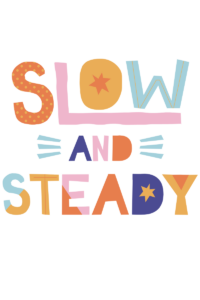By definition, a worksheet is anything printed on copier paper and given to students to write on.
Greg Tang has said, “the word ‘worksheets’ shouldn’t be a bad word.” And I would agree with that. However, the type of worksheet matters. For this blog, I want to take a look at worksheets disguised as practice but really used as “busy work” “mindless/passive sheets” “morning-work sheets” “shut up sheets” or “drill and kill sheets.”
Here’s how you distinguish the difference between a useful worksheet and a not so good one….it’s quality. Worksheets typically involve low-level skills. Believe it or not, they usually have little or no educational value. An educational habit developed in which we feel the need to continually give out worksheets for students to prove they mastered something. There are several ways for students show mastery. Unfortunately, we use the pile of papers as our proof.

Is School Engaging Or Just Clerical Work For Minors?
As adults, WE don’t like clerical work. All the forms and paperwork we have to fill out makes us lose our passion for our job. However, we expect this type of work from students. If students see Math as ‘sheets‘, they have to do and complete, students will ultimately lose their passion for the subject. It’s creating student burn out!
Check out this video of a student rebelling against packets – Video
This student was disrespectful BUT that’s not the point of the video, is it? He was frustrated as many of our students are. He was advocating for change despite the consequences. This student was clearly in a higher grade level so imagine how our elementary students feel.
In our home, my son went through a stage of not wanting to go to school. My husband and I are educators, so that wasn’t going to fly in our house.
When we asked him why he didn’t want to go, he would say, “it’s boring.” Now keep in mind most kids say this. Some children say this because they are struggling, feel unsafe or are being bullied. When we prodded, his answer was… worksheets.
We were perplexed as to how that could be his reason for being upset every day.
He continued to say that all he does all day is worksheets. I decided to collect (for a couple of days) all the sheets that were sent home. That’s when I saw the problem. The pile was ridiculous.
Here’s this kid who is so curious, loves to learn, and who is VERY good at math, start to hate the education system. At this point, I am just as upset. If I wanted my kid to do worksheets all day, I would keep him home and print them out myself.

When we send kids off to school, we hope they are learning in a way that is through exploration, engagement, etc. Students will not see the value of an activity if they are not engaged with it. I would find it difficult to believe that there are many students out there that LOVE worksheets.
The Teacher Pay Teacher Abyss
I used to have a Teachers Pay Teachers store full of what I thought were valuable worksheets. To be honest, I made products that would make a teacher’s life easier. Let’s get real; we don’t go on Teachers Pay Teachers to find the most engaging, thought-provoking, rich, high-quality problems. We hunt down things on the topic we are teaching, that’s easy to print and looks cute.
If it looks cute, it must be engaging, right? The problem here is we’re giving students a pile of “cute” sheets that may have no value.
Their Busy Work Becomes Our Paperwork?
I once saw a webinar from Angela Watson called. Do Fewer Things Better. As teachers, we need to ask ourselves, “Is this worth my time”? Sure, a worksheet is easy to print off, but we are also the ones checking/grading them later. So we are part of this clerical work cycle. I hate to say this, but I have often seen educators toss out completed student work because it was just too much to grade or correct. Reflect on, “Is this worth the students’ time, if I am not willing to even look at it?”

“But They Need To Practice?” Let’s Talk About Brain Research
Many teachers use worksheets to give students “practice” in the required skills. Sometimes we even mask our “busy work” sheets to look like it’s meant for practice. The fact is students need practice that is purposeful and backed up by research.
Let’s look at how the brain retains information. It starts off by how people initially receive information. If it’s dull students will put it in short term memory as information that is not really needed. So our initial lessons with students matter. Those types of lessons include (Rich Tasks). How do things get stored in long term memory? Hands-on, fun, engaging, challenging, collaborative experiences. Authentic and meaningful learning experiences will always trump a worksheet. Worksheets do not help store information in long term memory.

Let me provide you with an example that MANY of us have seen and experienced. Let’s say you are in your multiplication unit. You teach some lessons, give independent practice, send home homework, give a quiz. Then you move on to your next unit and repeat the cycle. You later throw a multiplication problem at them, the students forgot everything they learned in that long extensive unit you just covered. Why is that? Surprised all the worksheets didn’t help? You shouldn’t be. We don’t learn that way.
I know this is a complete structural change. If you’ve read my other blogs, I write a lot about systematic change. But here’s a small step you can take. Every time you’re about to use a worksheet, ask yourself if it’s contributing to student learning or if it’s just keeping them busy while being masked as “practice.”
If it’s a “busy, mindless, or shut up” sheet, replace it. There are better, richer, and meaningful alternatives out there. Not sure what richer alternatives look like check out Rich Tasks. Start compiling those resources.
For more check out:
- How The Brain Learns Mathematics
- Differentiation and The Brain
- Hands-On Standards
- Developing Number Concepts
- Rich Tasks
- Rich Tasks – Books
- www.youcubed.org
- https://nzmaths.co.nz/rich-learning-activities
- https://www.illustrativemathematics.org/
- http://www.mathalicious.com/
- https://emergentmath.com/my-problem-based-curriculum-maps/
- https://www.101qs.com/
- http://www.insidemathematics.org/
Want to check out more?
MEMBERSHIP SITE:
https://zennedmath.com/online-courses/
FACEBOOK GROUP: Zenned Math Teachers
https://www.facebook.com/groups/zennedmathteachers/
YOUTUBE CHANNEL: Zenned Math
https://www.youtube.com/channel/UC5njH_5LoK6G67BvZecGfnw?
WANT ME IN YOUR INBOX? Sign up for my newsletter
https://view.flodesk.com/pages/5efc876dcaabca0028b95eb5
DISCLAIMER: Some links included in this blog might be affiliate links. If you purchase a product or service with the links that I provide, I may receive a small commission. There is no additional charge to you!

